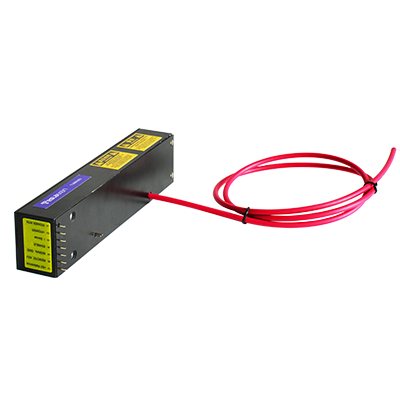Electronic Beam Welding High-Voltage Power Supply Innovation
1. Introduction: The Core Role of High-Voltage Power Supplies in EBW
Electron Beam Welding (EBW), a representative of high-energy beam processing technology, relies on stable electric fields provided by high-voltage power supplies to accelerate and focus electron beams. The performance of high-voltage power supplies directly determines the energy density, beam spot stability, and welding precision of electron beams. Technological innovations in these power supplies have been the key driving force behind the development of EBW towards higher power, precision, and intelligence. From early power frequency transformer-based supplies to modern all-solid-state high-frequency power supplies, the technological iteration of high-voltage power supplies has profoundly transformed the process boundaries and application scenarios of EBW.
2. Technological Innovations: Breakthroughs from Traditional Architectures to Intelligent Integration
(1) Topological Iteration: High-Frequency and Modular Design
Traditional high-voltage power supplies mostly used power frequency transformers for voltage boosting, accompanied by issues such as large volume, low efficiency, and significant ripple noise. Modern technology introduces high-frequency switching power supply topologies (such as phase-shifted full-bridge ZVS and LLC resonant circuits), increasing the operating frequency to tens to hundreds of kilohertz. This reduces transformer volume by more than 60% and boosts power density beyond 1.5kW/kg. Modular design further enables flexible expansion of power capacity. By paralleling multiple 20-50kV/1-5kW power units, hundred-kilovolt-class ultra-high voltage systems can be constructed to meet the welding needs of large-thickness components in aerospace.
(2) Intelligent Evolution of Control Strategies
The introduction of digital control technology has pushed high-voltage power supplies from hardware logic to software-defined systems. Full-digital control systems based on DSP and FPGA achieve nanosecond-level response speeds. Combined with adaptive PID algorithms and feedforward compensation technology, they control output voltage ripple within 0.1%. More advanced Model Predictive Control (MPC) and deep learning optimization algorithms are used to dynamically adjust electron beam parameters. For example, when welding aluminum alloys, the system can automatically correct the output waveform of the high-voltage power supply based on real-time monitoring of plasma spectral signals, suppressing thermal deformation and pore defects.
(3) Integrated Application of New Materials and Processes
The popularization of wide-bandgap semiconductor devices such as silicon carbide (SiC) and gallium nitride (GaN) reduces switching losses in high-voltage power supplies by more than 40%, with operating junction temperatures increasing to 175℃, suitable for extreme working conditions. In insulation design, nano-composite dielectric materials (such as Al₂O₃/PI composite films) have a dielectric strength of 500kV/mm. Combined with vacuum potting technology, they solve the leakage隐患 of traditional oil-immersed power supplies, promoting EBW equipment towards all-solid-state and maintenance-free development.
3. Application Expansion: Technical Adaptation in Diverse Scenarios
(1) Aerospace: Requirements for High Reliability and Lightweight
In welding single-crystal blades of aero-engines, high-voltage power supplies achieve precise energy distribution through pulse modulation technology (pulse width 1-10μs, frequency 1-10kHz). Combined with acceleration voltages above 100kV, they can penetrate 30mm-thick titanium alloy materials, with a heat-affected zone width of less than 0.1mm. Lightweight design uses amorphous alloy cores and planar transformer technology, reducing power supply weight by 35% compared to traditional models, meeting the load restrictions of airborne equipment.
(2) Microelectronics Packaging: Submicron Precision Control
For MEMS devices and chip-level packaging, high-voltage power supplies need to achieve extreme performance: voltage stability of ±0.05% and beam current fluctuation ≤0.1nA. By introducing low-noise power supply architectures (multistage LC filtering + active noise cancellation) and high-frequency correction of the electrostatic deflection system, precise welding with an electron beam spot diameter <1μm can be achieved, meeting the requirements of advanced packaging processes such as flip-chip and 3D integration.
(3) New Energy Field: Efficient and Green Manufacturing
In welding power battery tabs, the energy feedback technology of high-voltage power supplies sends regenerative energy back to the power grid, increasing efficiency to over 95% and saving 60% energy compared to traditional resistance welding. Meanwhile, the high-frequency pulse mode (peak power up to 100kW) can complete metallurgical bonding of copper-aluminum dissimilar metals within 1ms, avoiding the formation of interfacial brittle phases and ensuring the reliability of electrical connections in new energy vehicles.
4. Future Trends: Integrating Digital Twin and Green Energy Technologies
Next-generation high-voltage power supplies will deeply integrate digital twin technology. By constructing multi-physics field simulation models of power supplies, electron guns, and workpieces, they will achieve pre-optimization of welding parameters and fault prediction. In terms of energy efficiency, off-grid high-voltage power supply systems based on supercapacitors and photovoltaic energy storage have entered the R&D stage, with peak efficiency reaching 98%, providing possibilities for welding operations in extreme environments (such as space and deep sea). Additionally, AI-driven autonomous parameter adjustment technology will further lower the process threshold, promoting EBW from expert experience to intelligent process.
5. Conclusion
The innovation of high-voltage power supplies for EBW is essentially a cross-disciplinary breakthrough in power electronics, intelligent control, and materials science. From the high-frequencyization of topological structures to system-level intelligence, each technological iteration expands the application boundaries of EBW. In the future, driven by the dual goals of carbon neutrality and high-end manufacturing needs, high-voltage power supplies will continue to evolve towards higher efficiency, precision, and sustainability, becoming one of the core enabling technologies in advanced manufacturing.




















